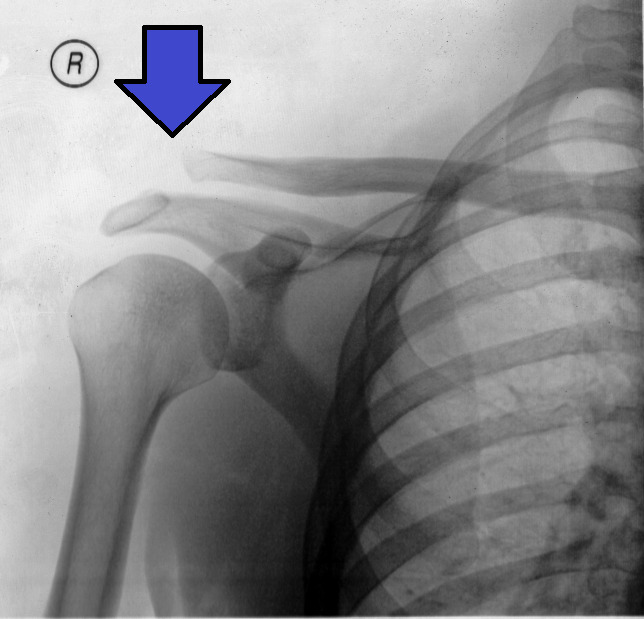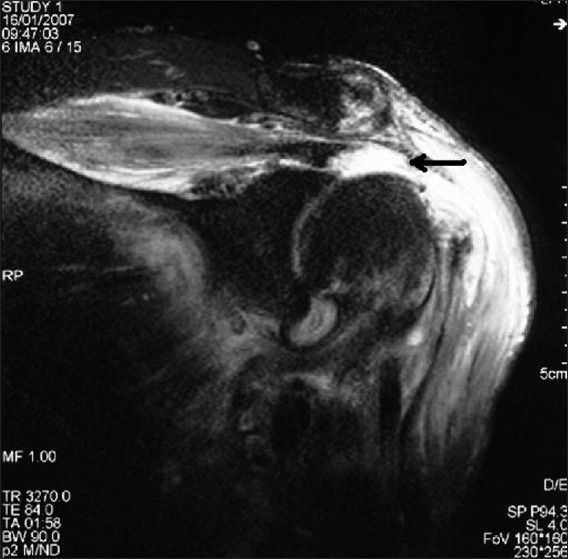Playlist
Show Playlist
Hide Playlist
Shoulder Pain: Extra-glenohumeral Causes
-
Slides Osteopathic Diagnosis of the Shoulder Region.pdf
-
Download Lecture Overview
00:00 There are a lot of potential causes for shoulder pain that is outside of the actual shoulder. 00:05 We want to make sure that you take a very thorough history and there's some clues as to what might be a potential extra-glenohumeral cause of shoulder pain. 00:16 If a patient comes in presenting with shooting, complaining of burning, numbness, tingling of their shoulder, and maybe radiating pain down their extremity, you have to think that there might be more of a potential neurologic cause. 00:29 So, you have to do a more thorough exam of the cervical spine. You may perform more special tests to make sure that it's not a cervical disc or a potential compression of the brachial plexus as it comes down and innervates the arm. 00:42 Again, shooting, burning pain, radiating pain, think a little bit more of a potential neurologic cause. 00:49 Patients that come in complaining of pain of the shoulder may also have pain being referred from the abdominal region. 00:56 Issues with the gallbladder, the stomach, the diaphragm can irritate the organs and send a referred pain to the shoulder. 01:05 This is also true for cardiac issues. 01:09 Everybody knows that if someone has a cardiac event, a lot of times it may radiate pain to the left shoulder and jaw. 01:17 So you always have to rule out a potential cardiac issue if someone presents with shoulder pain. 01:23 Infections of the lungs and the thoracic cage could potentially also refer pain because of irritation of the pleura. 01:31 Any sort of apical lung tumor may also irritate the viscera and cause referred pain to the shoulder. 01:39 Also, you also always have to rule out pulmonary embolism as a potential cause for shoulder pains. 01:46 In this chart, we're differentiating the different structures that could potentially cause pain in the shoulder. 01:52 There are some structures within the shoulder at the glenohumeral joint that could cause pain. 01:58 Then there's extraglenohumeral joint structures that are outside of the actual joint itself that could potentially cause shoulder pain. 02:06 So let's take a look at the glenohumeral sources. 02:10 Sometimes we could have some degeneration, calcifications of the actual humerus and the glenoid fossa which could cause pain at the shoulder. 02:17 Any sort of injury, inflammation, tear of the rotator cuff muscles and these tendons could cause pain. 02:24 Suprahumeral joint is the space above the humerus. 02:27 So impingement and compression of the structures above the suprahumeral joint or any sort of inflammation could cause pain there. 02:35 The capsule that surrounds the glenohumeral joint, those thickened ligaments that sometimes be torn or inflamed or injured. 02:42 These four things are possible glenohumeral joint issues that could cause pain. 02:49 Outside the joint itself, so extra glenohumeral joint issues are structures that potentially could get inflamed and injured around the joint that could cause shoulder pain. 02:59 The bicep tendon itself runs on the anterior portion of the humerus. 03:03 So, you could sometimes from overuse or inflammation have bicep tendon pain. 03:08 We talked about the clavicle and how if you have irritation of the clavicle, if you have any sort of displacement or injury to the A-C or S-C joints in the clavicle, that could really limit joint motion and cause pain. 03:20 The scapulothoracic joint is the motion of the scapula and the thoracic. 03:24 Remember, we need 5 degrees of motion at that scapula for every 15 degrees of motion of the shoulder joint. 03:30 So if that scapula is restricted, matted down, or has any sort of muscle spasm that prevents the scapula from moving on the thoracic area, that could cause shoulder pain. 03:41 Then the subscapularis bursitis, this is outside of the actual glenohumeral joint itself. 03:47 This bursa is underneath the scapula. 03:49 If it's inflamed and irritated, that could cause pain every time you try to move the joint. 03:54 There are some red flags that you need to be aware of when you're evaluating your patients. 03:59 We talked about before being really weary with patients that have shoulder pain that is also associated with any sort of chest pain or shortness of breath because of potential heart disease or issues with the lung. 04:14 If there's some sort of unexplained sensory or motor deficit, we're thinking that there might be some sort of compression or irritation of nerves, so cervical disc or any sort of compression of the brachial plexus or the nerves somewhere along the track. 04:29 If a patient has a history of trauma with acute disabling pain or any sort of significant weakness, you need to make sure that neurovascularly, everything is intact. 04:39 Again, trauma, seizures, electric shock, or loss of a normal contour are just different signs and symptoms that it raises your index of suspicion of something else is going on that you really need to take more action quicker. 04:52 Any sort of redness around the skin, any unexplained fever, any time the patient looks systemically unstable, there might be some sort of infection going on that's causing the pains and issues. 05:03 Patients with history of cancer, some sort of unexplained deformity, mass, or swelling, you need to make sure that it's not some sort of growth going on. 05:12 We could utilize special orthopedic tests to help narrow down our differential. 05:16 These special tests have been developed to help identify and elicit certain responses to confirm our suspicion. 05:26 But they do have limited sensitivity and specificity. 05:29 So you really need to take it in the context of the patient presentation, the examination, and also apply any additional imaging as needed to confirm your suspected diagnosis.
About the Lecture
The lecture Shoulder Pain: Extra-glenohumeral Causes by Sheldon C. Yao, DO is from the course Osteopathic Diagnosis of the Shoulder Region.
Included Quiz Questions
When assessing shoulder pain, pain radiating to the jaw accompanied by shoulder and left arm pain mostly likely would be an indicator of referred pain from which of the following non-musculoskeletal systems?
- Cardiac
- Neurological
- Phantom pain
- Rheumatological
- Gastrointestinal
When assessing shoulder pain, which type of extra humeral cause would most likely be associated with the complaint of burning and tingling of the extremity?
- Neurological
- Cardiac
- Rheumatological
- Congenital deformity
Which of the following symptoms or signs may be considered "red flags" during the evaluation of the shoulder and require further evaluation? (Select all that apply)
- History of cancer
- Ambidextrous
- Associated abdominal pain
- Evidence for erythema around the shoulder with unexplained fevers
Customer reviews
5,0 of 5 stars
| 5 Stars |
|
5 |
| 4 Stars |
|
0 |
| 3 Stars |
|
0 |
| 2 Stars |
|
0 |
| 1 Star |
|
0 |






